I started Twig & Ink because I wanted to share the stories of people working at the intersection of science, art, and writing. I also hoped it would become a way to meet more such people, and to begin to create a community.
Big thanks to Marina Schnell for introducing me to this month’s interviewee, Wriley Hodge. Wriley’s dedication to each of these disciplines—science, art, and writing—and to the beauty that emerges when they intertwine and are deeply integrated, gives me hope for the future.
Interview: Wriley Hodge
What sort of work do you do?
I am an undergraduate student at College of the Atlantic (COA). COA is a small liberal arts college on Mount Desert Island, Maine. At COA, every student majors in Human Ecology, which we loosely define as the study of the interaction of humans with their environment. This broad and interdisciplinary framework gives students the opportunity to develop their own curriculum; for me, this has meant focusing on field ecology and visual arts.
I have spent nearly 11 months of the past four years on an offshore field station where I live with, research, and draw the Herring Gulls that nest there. As I think back on my time at COA, I’ve come to realize that in a lot of ways, my undergraduate education has been about learning to see — to really see — a Herring Gull.
How are science, art, and writing part of your work, and how is the interaction between these areas important to you?
One of the great things about COA is that students have the freedom to not get pigeonholed into one niche discipline. But the breadth of studies can also give rise to a sort of identity crisis. Am I an ornithologist? A printmaker? A painter? A writer?
Over the last few years, I’ve come to realize that what I’m really trying to be is a storyteller. Science, art, and writing can each be a way to tell a story. I can tell you the story of a Herring Gull through data, how much she weighed when she was born, how fast she grew, and how old she was when she flew for the first time. I can tell you the story of a Herring Gull through art, through trying to distill some impactful moment into a visual image. Or I can tell the story through written word, through trying to shape words to describe my experiences living with these birds. Alone, these are all true ‘stories,’ but when I tell them together, I like to think that I am able to tell a more complete story.
When it comes to conservation, it isn’t facts alone that make people care, I think that in order for people to really care, there needs to be a good story. I hope that by combining art, science, and writing, I am able to tell the stories of the birds that I have grown to care so much about over the last few years.
What aspect of your work is most important to you?
The most important part of my work is to bear witness to the immense beauty of the world. Everything else comes from this. I find the inspiration to do research or to make art from those moments where I feel that I have witnessed something truly special.
I believe that art and science are a way to witness. In drawing a gull, or watching a gull for hours during behavioral observations, I become aware of nuances and depths to the gull that I was blind to before. In some ways, the process of drawing or doing research or writing is more important to me than whatever final product comes out of that. To paraphrase Eugene Ionesco, it is not the answer I seek, but the questions that arise along the way.
Is there a particular scientific or environmental problem that feels important to you? What do you do about that?
The issue that feels closest to home for me is how quickly our oceans are changing. Having spent the last three summers on an offshore island living with seabirds, this is the issue that I feel most tangibly confronted by right now. Fisheries continue to collapse, ocean currents are on the verge of changing dramatically, and we really don’t know how any of this will impact the broader marine environment.
Last winter, I was going through an ornithologist’s field notes with my advisor, and I came across an account of him landing on the same island where I have spent the last three summers, except he visited 100 years ago. I found myself shocked at this one part where he describes rowing up the shore, and not being able to see the sea floor because there was a blanket of urchins. I have landed at that same spot countless times. I have always leaned over the side of the boat, and marveled at the clarity of the water, how I could see every rock. But the rocks I see are bare. How does it impact the ecology of this landscape when there is so much less life in it?
What—and who—influences and inspires you?
In some ways, the answer to this question is very simple: Herring Gulls, Herring Gulls, and…Herring Gulls?
In other ways, it is more complex. I feel a great deal of inspiration and motivation from various people who have ‘planted seeds’ in my mind. When I was very young, a journalist and dear family friend named Matt told me stories of far off adventures; he walked me through the trinkets he collected as he traveled across the world gathering stories. Matt, and others like him, instilled a sense in me that there was more to the world, that the world is full of fantastic secrets. Those seeds are what led me to where I am today, and I have a very deep gratitude for them.
I also get a lot of inspiration from writers and artists. In a strange way, recently it has been writers who have inspired my artistic practice the most. Writers like J.A Baker, Annie Dillard, Barry Lopez, Terry Tempest Williams, and Maggie Nelson have been especially inspiring to me recently.
Are you interested in collaborating with other groups or individuals on science-art-writing projects?
Definitely! I am young and have not had many opportunities to collaborate outside of an academic setting, but I would especially love to collaborate with a conservation group or some sort of science communication group. I think in both of these fields, there is a lot of potential for the science-art-writing crossover to be really impactful.
If you could have a day to hang out with anyone in history, who would you choose, why, and what would you do together? (From Yvea Moore, 004)
This might be a little cliche, but I would love to spend a day with an old naturalist like Charles Darwin, Alexander von Humboldt, or Alfred Russel Wallace. I think that in the ‘golden age’ of natural history, there were fewer dividing lines between subjects. All of these naturalists had an immense knowledge of geology, botany, and vertebrate biology; field sketching was an everyday part of their work, and they wrote beautifully. When I look at scans of their notebooks, I find myself in complete awe. I think it would be a really insightful experience to go on a walk in the woods with one of these people.
Anything else you’d like to tell us about your work?
The prints I am sharing here are a part of my senior project (COA’s equivalent to a senior thesis). My senior project is titled Reflections of Gulls, and the focus of it is what this interview is all about; it is my attempt to tell a story about gulls.
One third of this project is hard science: I developed a research project looking at why gulls nest where they nest. In my research, I am trying to understand what the biological processes that underlie the differences in nesting density I have observed across gull colonies.
Another third of this project is printmaking. Over the years, there have been moments that absolutely etched themselves into my mind. My intent with these prints is to capture the reflection that those moments left on me. These prints are not scientific expressions of birds. These prints are testaments to the edge these birds call home, they are portraits of where they live and die.
The final third of my project is written word. I am piecing together the art and science with various essays and other written pieces. The words are the thread that stitches together the art and the science.
Thank you so much, Wriley!
You can learn more about Wriley’s work here and here.
Branching Out
Rooted (Stuff I like, maybe slightly off topic):
A celebration of the ways science, art, and writing can bring people together in powerful and unexpected ways:
Draw Together with Wendy Mac (right here on Substack!), especially this most recent post.
iNaturalist—the app itself, and the community of people using it.
Doug Greenfield, creator of Map of the Week (also here on Substack!) has shared some maps of the upcoming solar eclipse on 8 April 2024 (Part 1 and Part 2). Our family traveled to see the eclipse in 2017. The whole experience—the eclipse itself, and the whole campy atmosphere that sprung up around it—was amazing. If you have the opportunity to stand around wearing funny looking (but absolutely necessary!) glasses and marvel at this phenomenon, I highly recommend it. (Also: Annie Dillard’s essay about a total eclipse—excerpted here).
Rounded (Preview of coming attractions):
Celebrate the achievements of this year’s Creature Conserve mentees (and their mentors!) at the upcoming Mentorship Showcase on March 23rd and 24th. Note that this event will not be recorded, so please register in advance (it’s free!) and plan to watch the livestream.
The April issue of Twig & Ink will feature Ana Martínez Orizondo.
Reaching (A question for you!):
I’d love to hear your recommendations for books, music, movies, and/or visual art that touch on themes of restoration—ecological, personal, or whatever else comes to mind. Please share your suggestions in the comments below!

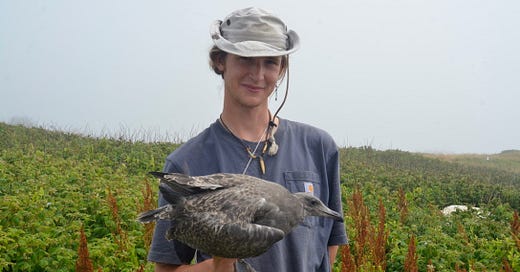



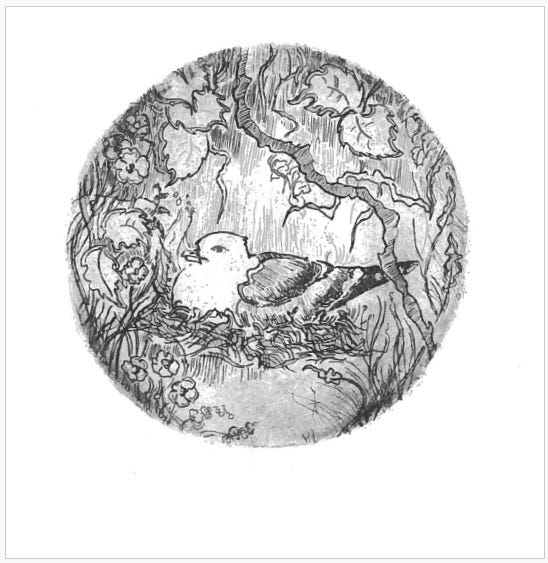
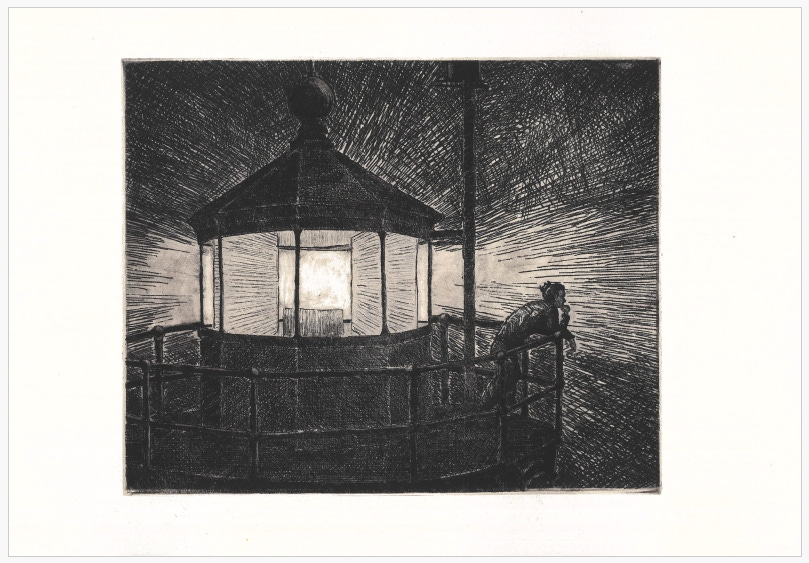
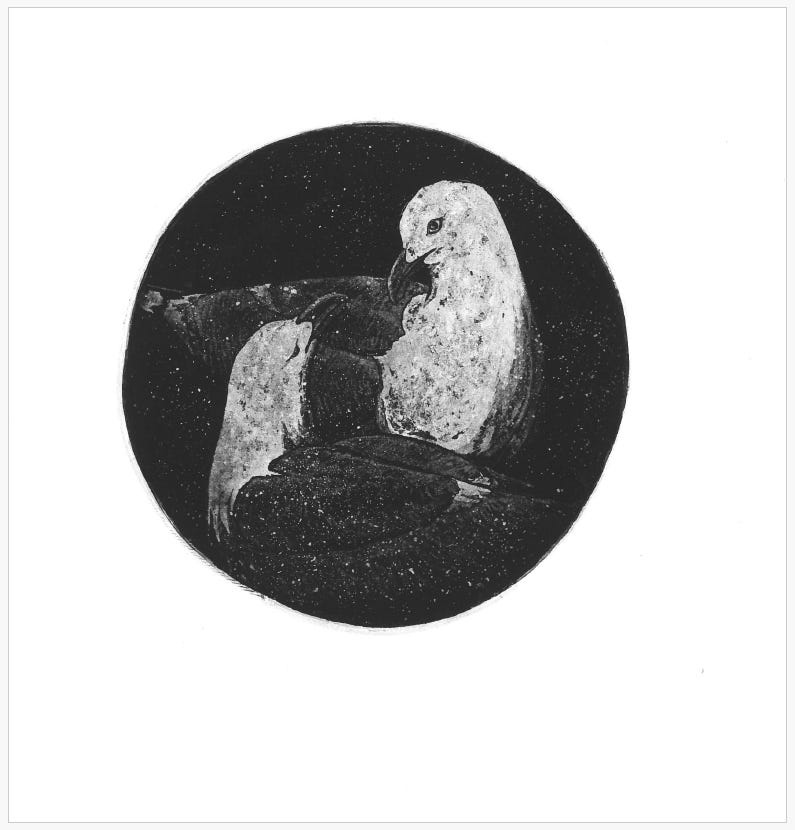
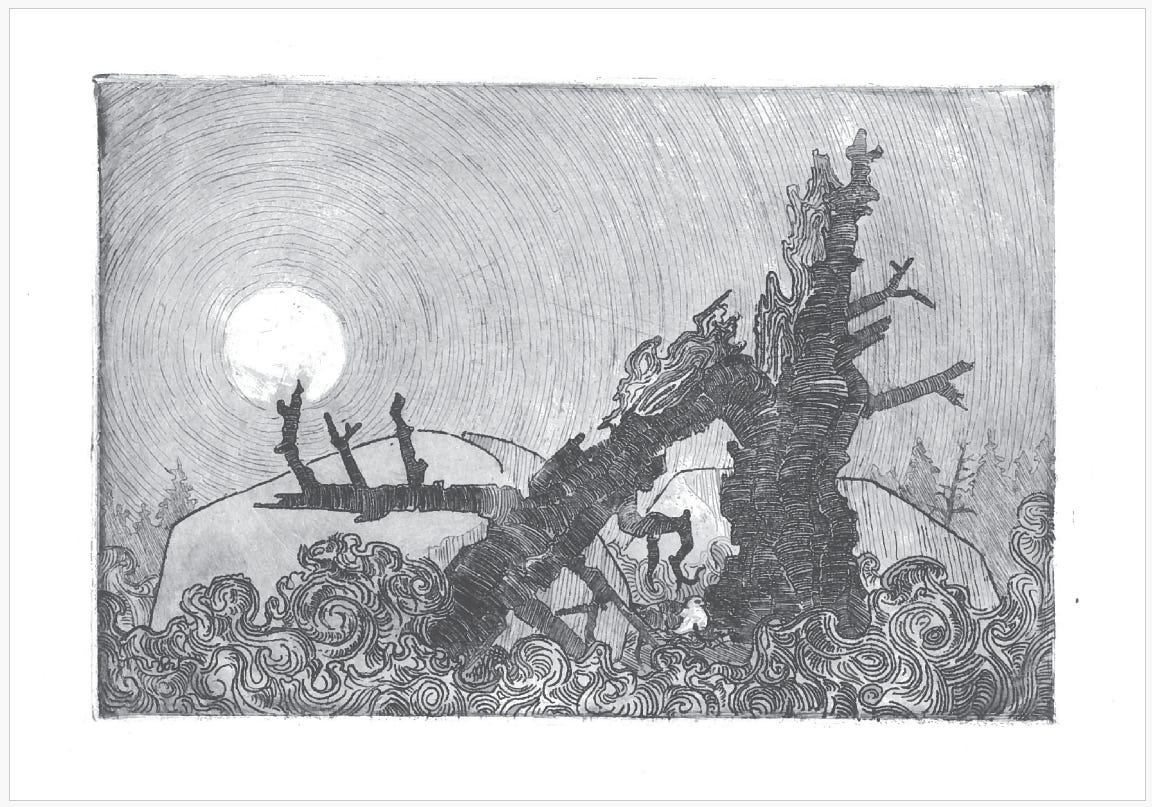
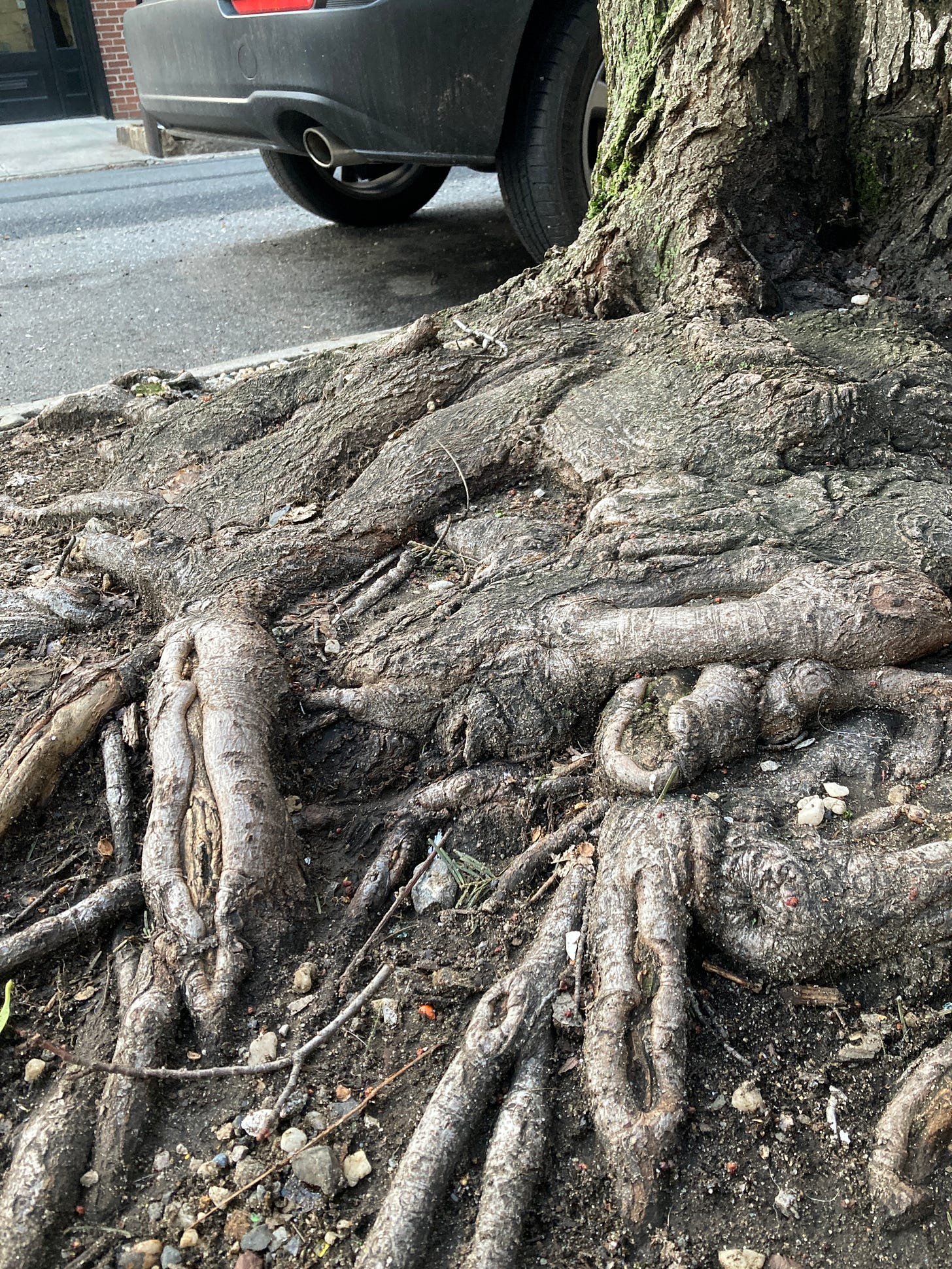
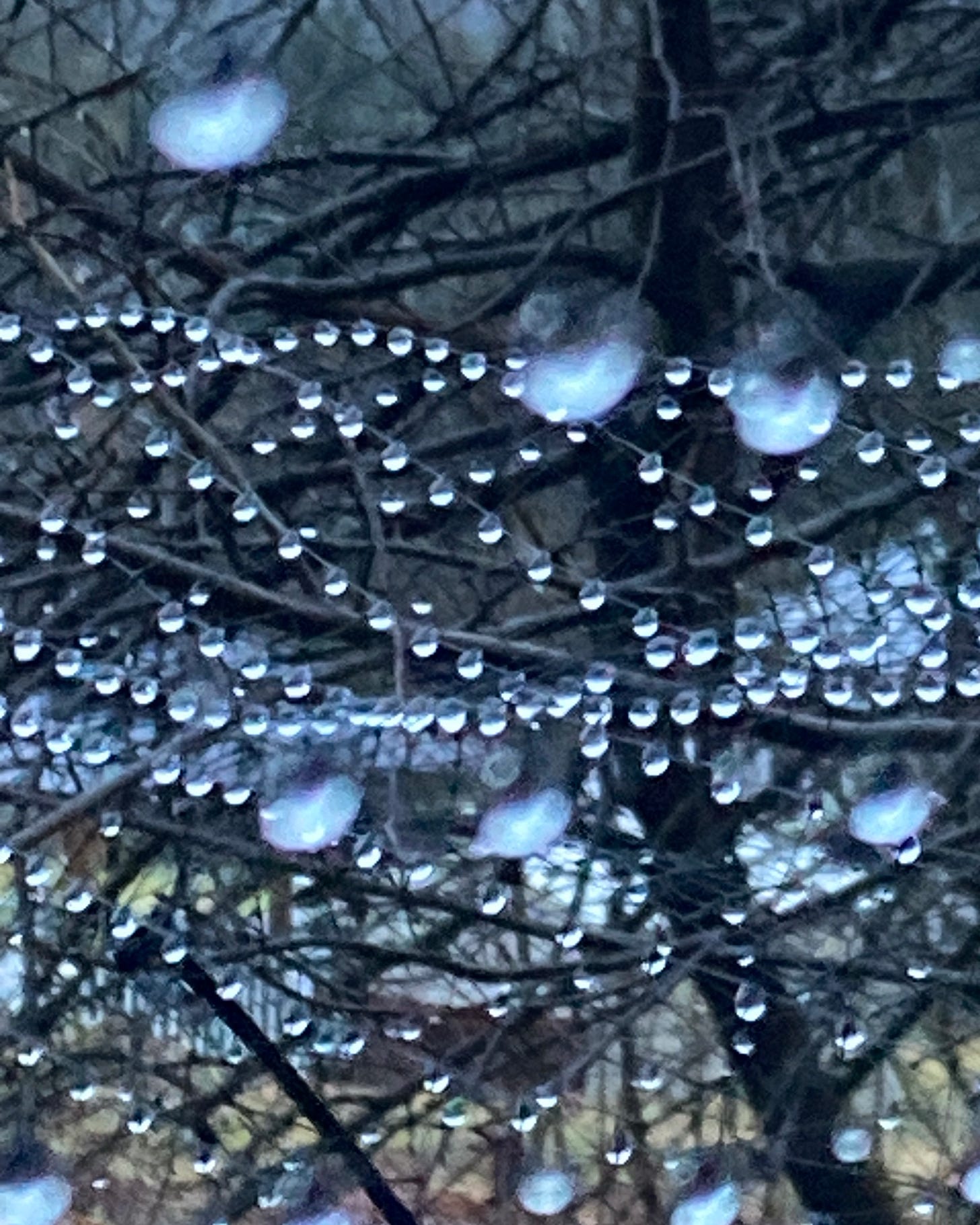
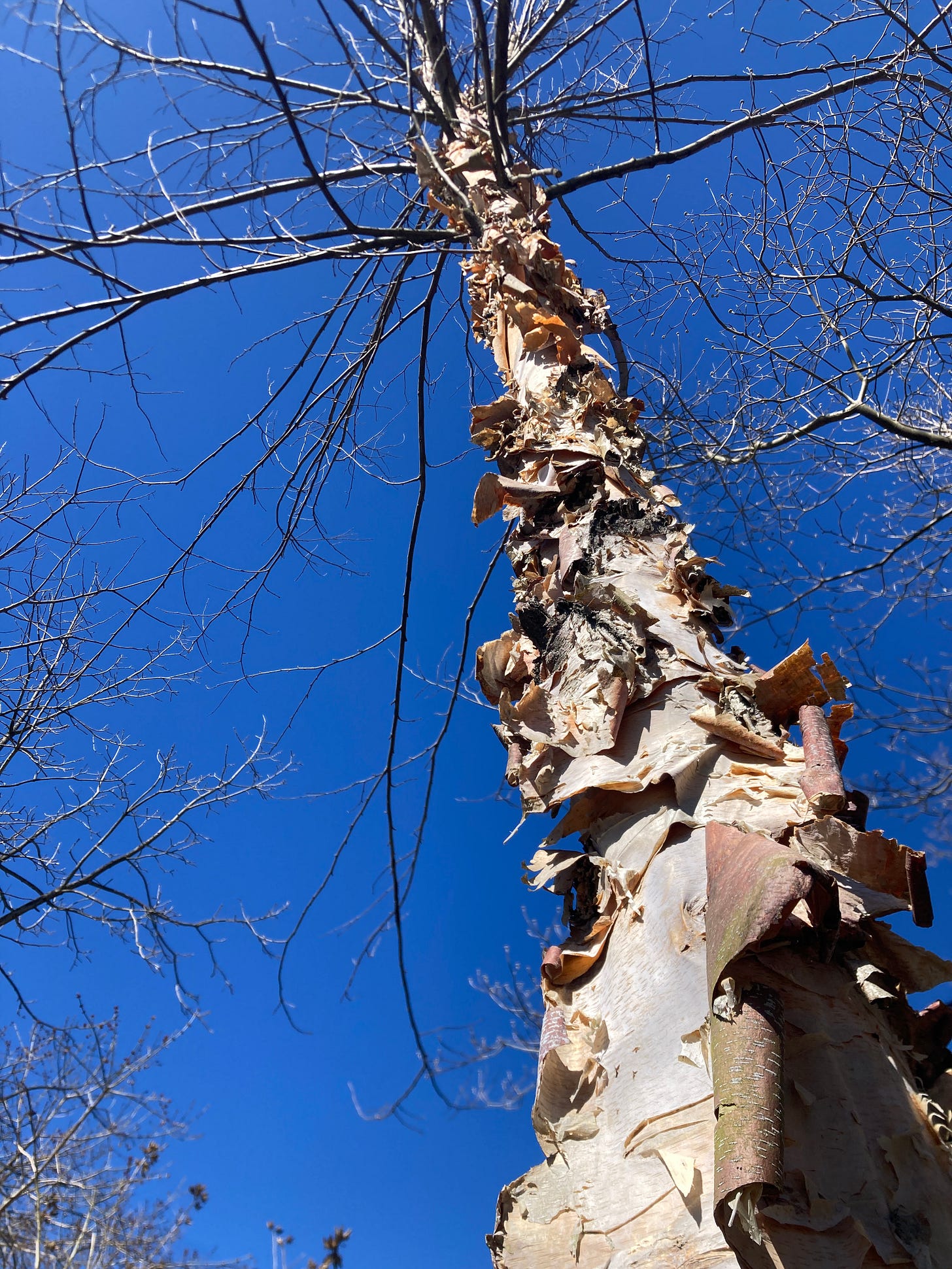
Ha! I hadn't realized that was a "Chicago" mistake. So funny!
OMG! I said Wrigley! That’s Chicago for you! So sorry, Lisa and Wriley!😊